VIMA Art Fair: How Cyprus is Shaping a New Cultural Hub in the Mediterranean
Cyprus steps onto the global art stage. Discover how VIMA Art Fair is reshaping the Eastern Mediterranean's cultural landscape — one bold, sunlit exhibition at a time.
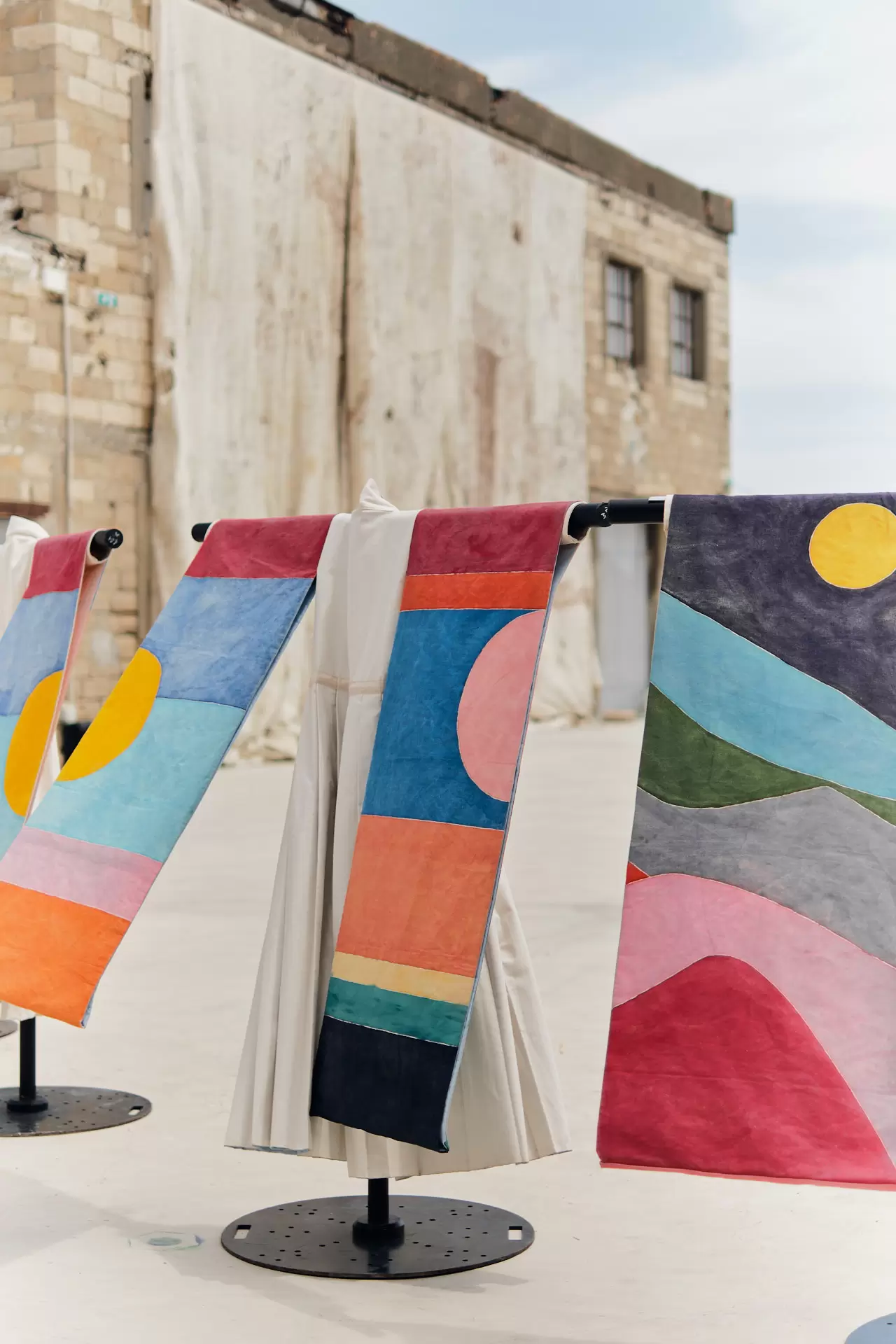

In May 2025, Cyprus debuted its first international contemporary art fair—VIMA.ART—a timely initiative that seeks to position the island not only as a geographic crossroads, but as a meaningful site of artistic exchange across the Eastern Mediterranean and beyond. Taking place in a repurposed wine warehouse by the sea in Limassol, VIMA established itself with clear intention: to reflect the cultural complexities of its context while offering a platform for emerging and established voices from Cyprus, the broader region, and further afield.
Rather than adopting the scale and spectacle often associated with global art fairs, VIMA focused on a more intimate and considered approach. With participation by invitation only and a focused selection of 27 galleries—including 10 from Cyprus—the fair offered a balanced selection of local and international representation.
At the heart of the fair lies a commitment to creating not just a marketplace, but a cultural meeting ground—one that responds to the island’s shifting demographic, its layered histories, and its growing relevance in the contemporary art landscape. The interview that follows offers a reflection of VIMA’s desire to connect, question, and reimagine what an art fair in Cyprus can be.
What inspired you to establish VIMA Art Fair in Cyprus, and how did the location influence your vision?
We wanted to contribute to its already impressive and growing art ecosystem—VIMA emerged gradually after much research and interaction with the local scene. Since making Cyprus our home, we have all experienced a constant flow of new art spaces, galleries, and foundations opening in Limassol particularly.
While the majority of artists live and work in the country’s capital, Nicosia, Limassol has emerged as a vibrant hub for both cultural and commercial activities, offering a dynamic setting for an art fair. The growing number of galleries and artists who are actively working here and building international connections provided a solid foundation for hosting an art fair—it felt particularly significant and timely.
Given Cyprus’s historic position as a crossroads in the Mediterranean—a natural gathering space—it was almost impossible not to explore the surrounding region and its connection to it.
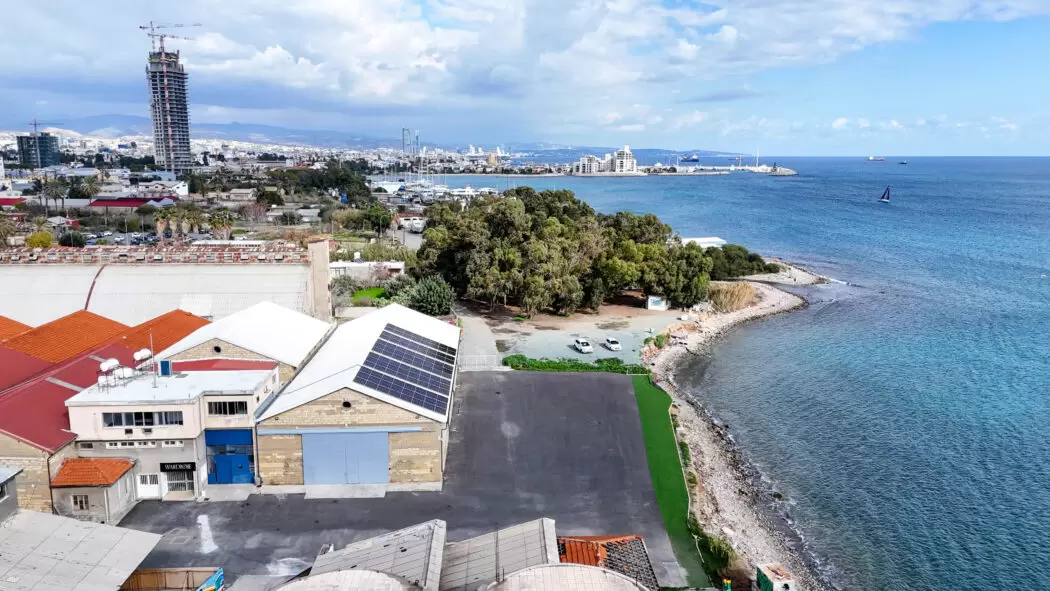
A drone’s-eye view of the VIMA Art Fair venue in Limassol, Cyprus—a repurposed seaside warehouse that bridges the island’s industrial past with its cultural present.
How does VIMA differentiate itself from other contemporary art fairs in the region and internationally?
With Cyprus located at a unique geographical and cultural crossroads of the Mediterranean, VIMA Art Fair has a strong regional focus. Participation is by invitation only, with a goal of up to 30 galleries, making for a selective, intimate setting. Our curatorial project and parallel programme also aim to highlight contemporary art in the region as well as Cyprus’s rich cultural heritage.
The fair took place in a former wine warehouse near the sea, a space rich with history and atmosphere. How important was the choice of venue in shaping the identity of VIMA?
For us, it was important to be close to the sea. A crucial part of VIMA’s identity is the Mediterranean and the cultural connections to the surrounding region it brings with it. The Mediterranean Sea connects these. Once we understood that there was a venue with this opportunity, it was a yes for us. The building is also rooted in Cypriot history, and hosting an international art fair there felt meaningful.
How did the architectural and historical elements of the venue influence the curatorial approach and visitor experience?
This was best demonstrated through VIMA’s site-specific, outdoor Curatorial Project by Paris-based Ludovic Delalande. The group exhibition titled ‘The Posterity of the Sun’ presented works by 16 artists and one writer connected, again, by the Mediterranean. This time, instead of the sea being the common factor, it was the sun. Presented in the venue’s disused space, among the exposed ruins of a decaying architecture—their common thread was the sun. Each work was in dialogue with the space and the sun’s shifting presence within it, while the exhibition itself reflected on the coming disappearance of the sun (in five billion years), within the context of the human condition.
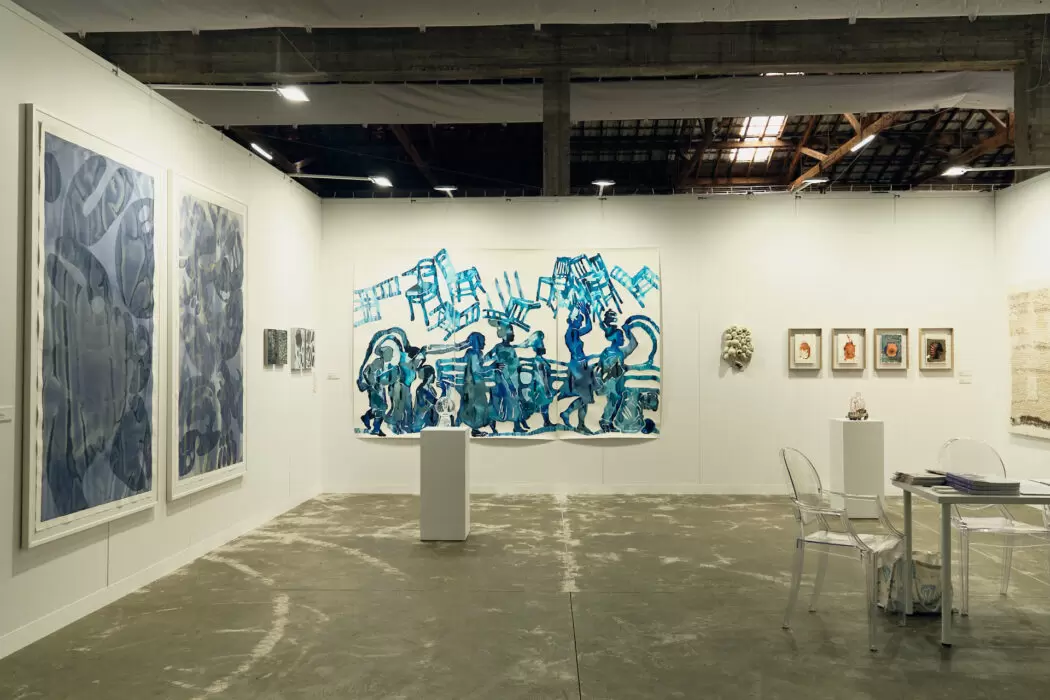
Installation view of NIKA Project Space (Dubai/Paris) at VIMA Art Fair 2025
Cyprus is a unique crossroads of cultures and histories. How does VIMA engage with the island’s multicultural and geopolitical complexities through its programming?
In addition to the booths, our Public and Parallel programs offered activations at the fair, all over the city and beyond. This allowed us and VIMA to forge long-lasting relationships with artists, galleries and other art professionals while offering audiences a window into what Cyprus has to offer.
Around 4,000 people visited VIMA from Cyprus and abroad. VIMA was able to offer each of them unique insight into Cyprus’s history and culture through its extensive programming. Art can teach us a lot about a place through multiple viewpoints, personal and otherwise.
You have emphasised supporting the local Cypriot art scene alongside galleries from the Mediterranean and Eurasian regions. How do you balance local focus with international ambition?
VIMA Art Fair became a platform where people came together and saw how much interest and support there is for contemporary art in Cyprus. It showed that engaging with art matters—not just for artists, but for everyone who lives here. The fair encouraged more visibility for local voices and reminded us how important it is to support artistic projects and be curious about what is being created around us. Out of the 27 participants at the fair, 10 were Cypriot—it was important that we represented Cyprus first and foremost.
The expert committee played a significant role in shaping the fair. How did you select these advisors, and what impact did they have on the fair’s final form?
Vima Art Fair Team: In order to maintain a high standard and selective approach, we worked closely with a brilliant expert committee comprising Alexandros Diogenous (Founder of Pylon Art & Culture, Co-founder of Limassol Art Walks), Tasos Stylianou, (Director and Co-founder of Limassol Art Walks and Gallerist/ eins), Maria Varnava (Gallerist / Tiwani Contemporary, Lagos, London), and Andre Zivanari (Founder and Director of Point Center for Contemporary Art, Nicosia). They are not only involved in the gallery selection process, but also in advising on VIMA’s overall strategic decisions.
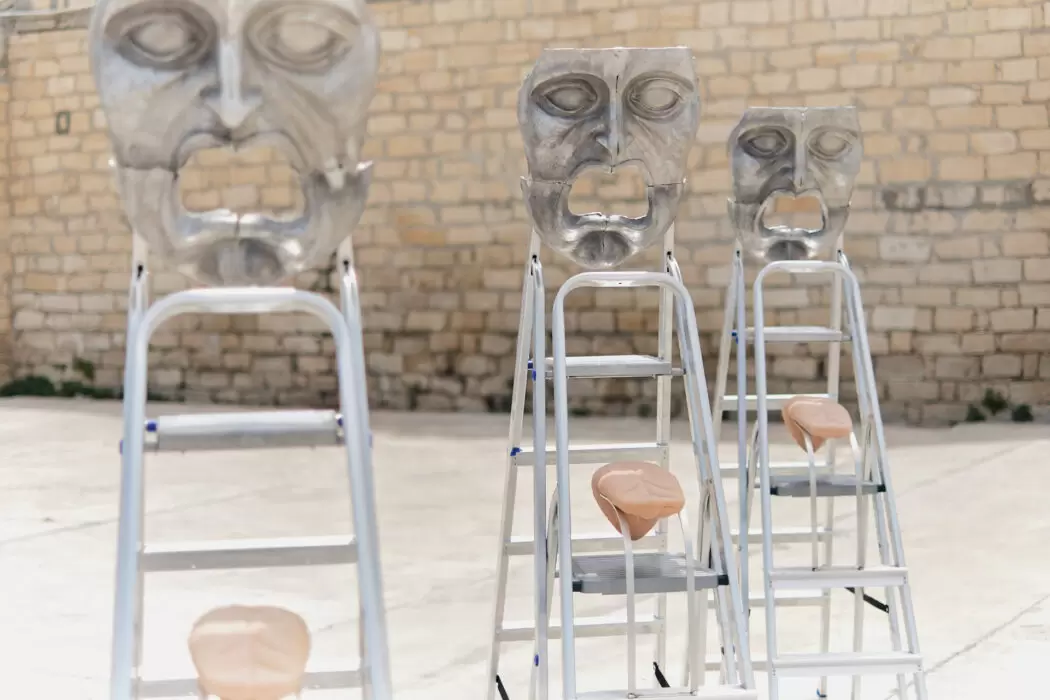
Demagogue (2025) by Panos Profitis—a striking outdoor installation presented at VIMA Art Fair, confronting themes of speech, power, and public performance.
How do collaborations with local institutions and cultural initiatives enhance VIMA’s mission?
Vima Art Fair Team: It’s an important part of what the fair is about—especially for our international guests, who often have just a few days on the island. We want to give them a chance to experience more of Cyprus: to see the cities, the people, the energy of the local scene through art. By partnering with local institutions and organisations we can do this. And for us too, it’s a way to connect the fair and its audience with the wider cultural landscape in Cyprus.
VIMA presented a strong presence of galleries from Cyprus, the Middle East, the Caucasus, and Greece. What criteria guided your selection of galleries?
Participation in the fair is by invitation only, spearheaded by the fair’s expert committee. The criteria started with our approach—that VIMA focuses on the Eastern Mediterranean as a whole. While creating VIMA, we realized how important it is to see the Eastern Mediterranean not just as separate national markets, but as a shared cultural space with deep connections and common challenges. By placing this focused lens on the Mediterranean space, we hope the fair will naturally highlight some of the shared questions and connections across the region—not by claiming to define them, but by offering a space where they can surface through dialogue and collaboration.
VIMA is not only about galleries and artworks—it’s also about conversations.
Could you share insights about some standout artists or works that you feel particularly embody the spirit of this inaugural edition?
We were incredibly happy with the final lineup of galleries both international and local. From our perspective, every participant at the fair presented work at the highest standard in terms of selection of works, curation and overall themes. There was a clear sense of pride and dedication from each of them, and we hope they got that impression from the VIMA team too. We were extremely satisfied!
Cyprus has a growing influx of expats, including those from the tech sector. How does VIMA engage with these new audiences, and what strategies do you have for expanding the local collector base?
We target different kinds of audiences—those who are based in, recently moved to, or just visiting the island, including the art community, artists, art professionals, art enthusiasts, collectors and members of the general public. In parallel, we aim to engage international audiences, placing particular emphasis on those from neighbouring Mediterranean countries.
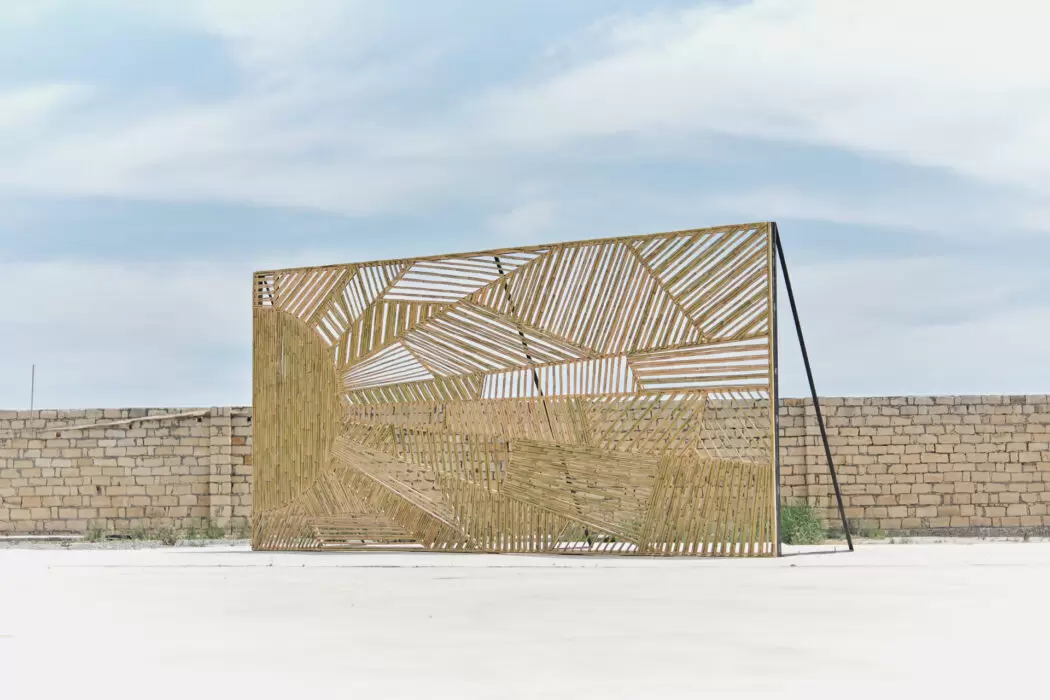
Shadow Time (2025) by Jennifer Douzenel—a geometric bamboo installation at VIMA Art Fair, exploring light, pattern, and impermanence in an open-air setting.
How do you see VIMA’s role in strengthening the art market and cultural infrastructure on the island?
Vima Art Fair Team: In Cyprus, there’s already a strong cultural scene shaped by institutions, independent spaces, and artistic initiatives. Our intention with VIMA is to complement this landscape by building a professional platform that supports the market side of the equation. A productive market interaction among local artists, gallerists, collectors, and art lovers. We hope it will be a useful tool to support sales and increase visibility at home and in surrounding countries.
What lessons have you learned from launching VIMA’s inaugural edition, and how will they shape future editions of the fair?
Most of the feedback we have had so far has been very positive regarding the gallery selection, program, organisation, and results. There is, of course, space for improvement, and based on feedback from the galleries, collectors, and art lovers, we are already working on our plan to make the next edition a must-visit!
VIMA aims to be more than just a fair—a platform for dialogue, exchange, and collaboration. How do you see it contributing to the cultural ecosystem beyond the art market?
VIMA’s mission is to embrace the diversity of Cyprus and the surrounding Mediterranean region in an inclusive and accessible way.
We aim to provide visitors with an enticing snapshot of Cyprus’ contemporary art landscape, along with the broader region’s vibrant art scene, all within an intimate and engaging experience.
For now, we believe we’ve managed to achieve the goal we set at the forefront of VIMA—to provide a new platform in Cyprus for collaboration within the art ecosystem of the wider region. VIMA welcomed galleries and curators from Greece, Turkey, Lebanon, and the Gulf, connecting Cyprus to a broader cultural network. We hope these relationships will continue to grow.





